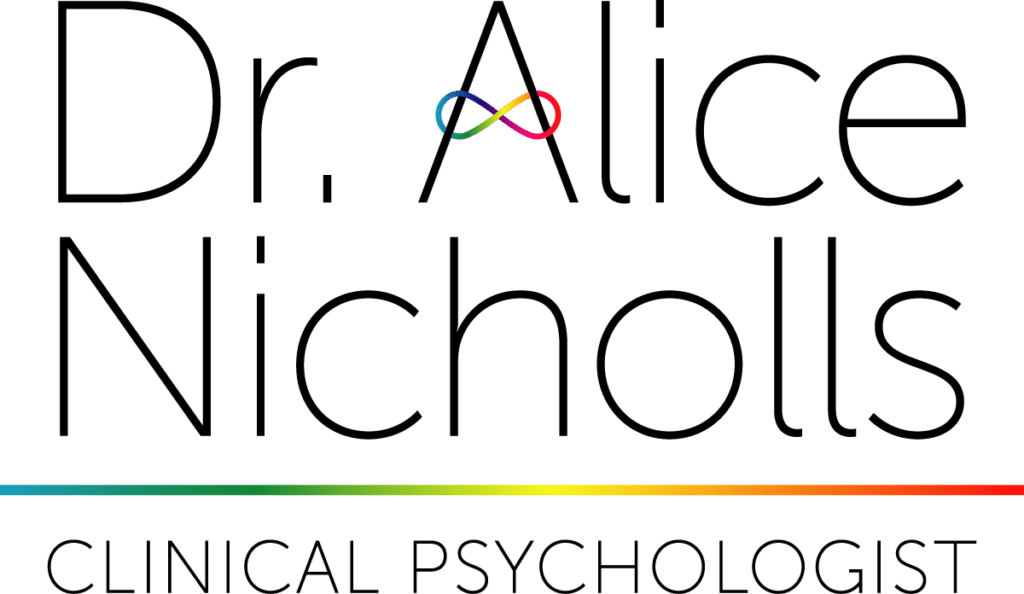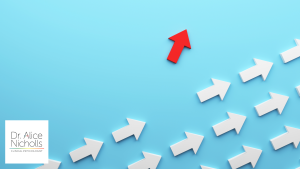When you are in Autistic Burnout you will likely know, or be told that that what you really need is rest.
But what exactly does that mean?
For many Autistic people, rest is far from straightforward. Not only can it be difficult to access rest practically (due to life circumstances, responsibilities, or lack of safety), but it can also be hard to identify exactly what kind of rest we actually need.
Autistic Burnout can affect multiple domains: physical, emotional, cognitive, social, and sensory, and not all forms of exhaustion are best addressed by stillness or silence.
Sometimes, movement or stimulation can be more restorative than what is traditionally labelled as “rest.”
In this article I will
- Discuss the problems with prescribed notions of ‘rest’
- Explore different types of rest
- Explain how you can determine the best way of resting for you, taking into account your unique needs and context.
The Problem with Prescribed Notions of “Rest”
Many of us have been taught neuro-normative or culturally narrow definitions of rest: taking a nap, lying still, watching TV, having a bath, going on holiday. While these may be helpful for some, they don’t always align with Autistic needs, particularly in burnout.
For some people, trying to force themselves to rest in these conventional ways can actually create more distress. They may feel bored, agitated, overstimulated, or emotionally dysregulated. Over time, this can lead to internalised shame: “Why can’t I even rest properly?”
Example:
Before my Autism diagnosis, I believed I simply wasn’t good at resting.
I was often criticised for being unable to sit still — for wanting to colour, paint my nails, crochet, or fidget while watching TV. When I studied psychology, I assumed this difficulty was a sign of anxiety. I tried to rest “correctly” — sitting still in front of the TV — but found it uncomfortable and frustrating. I felt bored, restless, and quite frankly, like I’d prefer to gnaw my own arm off.
It wasn’t until after my diagnosis, and through learning about sensory regulation, that I began to question what rest actually looked like for me as a neurodivergent person. I came to understand that I need low-level physical stimulation in order to relax — unless I’m extremely physically exhausted.
I had known this about myself all along. I had just learned to believe I was wrong.
Understanding the Types of Exhaustion
Extreme Autistic Burnout often comes with exhaustion in more than one domain: Physical, cognitive, social, sensory and/or emotional.
So you might need to rest physically, but if your burnout is caused by social, emotional and cognitive stress, you actually might not need physical rest at all. In fact physical movement may be really helpfuland might help to relieve some of the stress you have been feeling.
If on the other hand you’ve been under a high degree of physical and sensory stress you might really need a physical rest in a sensory-soothing environment.
If you are struggling to rest effectively it is worth considering..
What kind of tired are you?
Physical: e.g. illness, physically demanding work/activities.
→ Rest might involve lying down, sleeping, gentle movement, or minimising physical exertion.
Cognitive: e.g. trying to solve complicated problems at home/work, analysing data etc.
→ You may benefit from “mental stillness” or switching to less-demanding tasks or things you can do on ‘autopilot’. Alternatively, engaging in novel, low-stakes learning may feel more restorative than full disengagement.
Sensory: e.g. spending time in aversive environments with lighting, noises, smells, tastes, textures that you find unpleasant or overstimulating.
→ Rest might involve time in low-stimulation spaces, engaging in soothing sensory input, or using tools like ear defenders or weighted items
Emotional: e.g. bereavements, relationship breakdowns, adjusting to life changes.
→ Emotional rest might mean allowing space for expression (crying, journaling, connecting), or gentle distraction to reduce emotional intensity
Social: e.g. conflict, negotiations, masking.
→ This could involve solitude, being around familiar people without expectation, or communicating in low-pressure, asynchronous ways.
Understanding Need for Stimulation
When you have identified the type of exhaustion you are experiencing and the type of rest you need, you may still find rest inaccessible if you have unmet needs for stimulation.
Here I have outlined common signs of unmet need and a few potential ways of meeting those needs.
Physical: You might notice feeling agitated, tense, wound up, fidgety or restless. Hungry or thirsty.
→ You might benefit from exercise, movement, stretching, food, drink.
Cognitive: You might notice feeling bored, uninterested, uninspired, frustrated, or repetitive thoughts.
→ Stimulation might involve interesting topics of research, puzzles, documentaries.
Sensory: This depends very much on your sensory profile but if you find you are craving a certain type of sensation or that certain sensations make you feel better then this is worth investigating further.
→ Try engaging with any sensory input you crave or enjoy- e.g. activities that give you feedback about where your body is in space (proprioception), Vestibular (any movement involving your head) gustatory (taste) auditory (sounds) tactile (touch, including deep pressure e.g. from a massage or weighted item), Visual (e.g. looking at images, watching raindrops or a glitter lamp).
Emotional: You might notice feeling nothing, feeling emotionally disengaged or uninterested. If this is due to emotional exhaustion then this may signal you need to rest.
→ If you think you need some emotional stimulation then you might benefit from something that makes you laugh, cry or even scares you a little bit.
Social: You might notice feeling lonely, a lack of connection, a desire to talk to or make contact with others.
→ It might help to connect with other people in whatever way suits you best, this could be verbally in person, via phone or video call or online via text based discussion or online gaming.
Questions to Ask Yourself
To identify what kind of rest you need, try asking:
What kind of tired am I?
Is my fatigue mostly physical, or is it cognitive, emotional, social, or sensory?
Is there a type of stimulation I am actually craving?
Rest is Personal — and It’s a Skill
Rest is not a universal prescription. It is an individual process that may need to be learned — or relearned — especially after years of ignoring your needs or trying to follow a model that doesn’t fit.
You may need to experiment, reflect, and adjust. What restores you today may differ from what you need tomorrow.
Example:
A day at the beach with my children, for example, might not look restful at first glance. I was building sandcastles, digging speedboats, and pulling an inflatable (specifically, a mermaid princess’ Water Alicorn). I wasn’t physically resting.
But: my mental load was lighter due to support from family. I was offline, away from notifications, in a natural environment. I wasn’t thinking about the future. I was receiving the sensory input I needed.
I came away feeling more rested than I had in a long time.
Another day, I might lie on the sofa while the children are with their father, writing or thinking — not physically active, but mentally alert. That too can be a form of rest, depending on what I need.
Want Support Exploring This?
If you’re in early-stage recovery from Autistic Burnout and want help identifying what kind of rest and support you truly need, you might find my 90-day programme Basecamp helpful. It offers gentle structure, community, and guidance to support your recovery.
You can learn more about Basecamp here: www.dralicenicholls.com/authenticity-basecamp
I am an Autistic Clinical Psychologist specialising in Autistic Burnout if you would like to know more about my work please check out my:
- Mailing list community for people who want to receive helpful information and resources about Autistic Burnout.
- Free short course on How to Break the Cycle of Autistic Burnout (link goes straight to registration page)
- Authenticity Basecamp: A 90 day support programme for people in the early stages of recovering from Autistic Burnout who want to get calmer, clearer and more supported.
- Authenticity: The Course and Community: For late-realised, high-masking Autistic adults who want to build more sustainable, authentic lives and break free of the cycle of Autistic Burnout for good.









